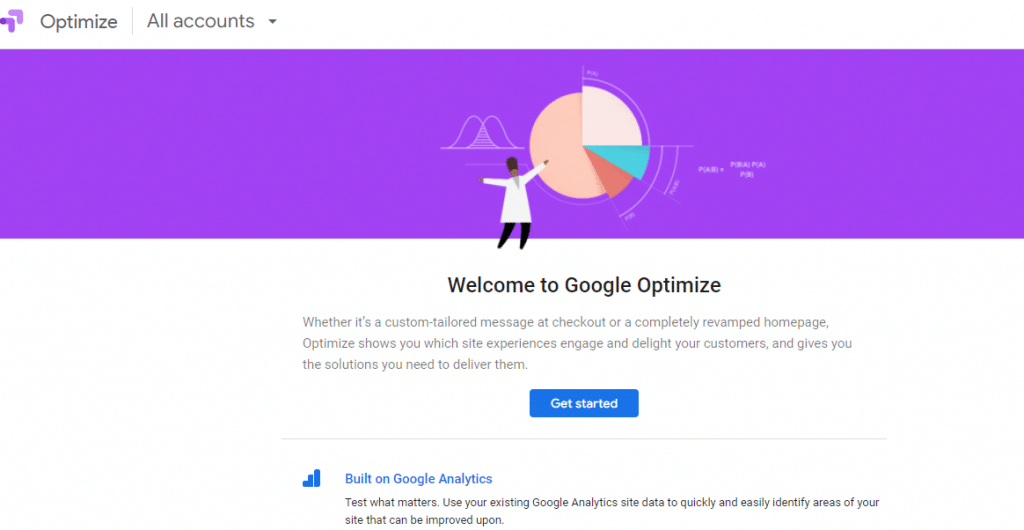Marketing efforts today rely more and more on getting your brand noticed by search engines and, in turn, bringing more visitors to your website.
Yet, it’s no secret that Google regularly makes hundreds of changes to its algorithm each year. These changes can affect your overall SEO efforts and not always in a good way.
So, how can you determine if your website is living up to its potential? One way is to incorporate SEO split testing into your strategy.
With such testing, you can make small tweaks and find out what works best when it comes to ranking higher and reaching your target audience.
What is SEO Split Testing?
SEO split testing is a process in which you divide similar website pages into two distinct buckets or groups. You then use one as a control group while making a change to the other group, called the variant.
A comparison of the performance of each group then follows.
The overall goal of conducting SEO split testing is to find ways to attract higher levels of organic traffic to your page.
The testing itself can first show you how the search engine interprets or reacts to the changed page. Did it lead to a higher ranking or a lower one?
It can also show how users respond to finding the page on the search engine results page or SERP. In other words, how many users clicked through to your webpage versus how many did so from the control page?
Why Should You Run an SEO Experiment?
Running an SEO experiment such as split testing can be beneficial in several ways.
Sitewide changes can be costly and may even decrease your SEO rankings if you’re unsure where to make those changes. With split testing, you can save money by taking the one-page at a time approach.
Another reason to run an SEO experiment revolves around algorithm changes.
When these algorithm updates occur, a good way to ensure your website stays relevant and positively recognized by the search engine is to test out the new features.
Start by determining what the new features incorporated into the latest algorithm change are, then set up your split testing to test them.
By staying on top of how the algorithm changes impact your SEO efforts, you are being proactive, and this approach can help keep you ahead of your competitors.
Finally, by running an SEO split-testing experiment, you can make small, strategic changes to your website pages, improving the experience for users. In turn, those users are more likely to click through to your website.
SEO Split Testing: How to Run an Experiment
Strategic steps to run a successful split testing experiment include the following.
1. Identify Templatized Pages in Your Site Structure
To run a reliable experiment like this, your website needs to contain templatized pages. These pages will have a similar intent and repeatable format across the site.
Examples of templatized pages include:
- For content or media sites, the same template for blog posts.
- For eCommerce sites, the same template for the category and product pages.
- For travel sites, the same template is for destination pages.
Your site needs to be large enough to make an SEO split testing worth your time and expense and provide a statistically significant result. The more templatized pages you have and the higher the organic traffic to those pages per month, the more reliable your results will be.
2. Select a Group of Pages to Use in Your Test
Once you find a set of pages containing the same template, you will need to select a group of those pages to use in your test.
Perhaps you will base this selection on current page performance.
For example, if specific pages are not receiving the traffic that you think they should, running a split testing experiment can give you clues on how to increase that traffic.
3. Choose a Focus Area
Consider your current SEO strategy and marketing priorities to determine what it is you want to test, choosing a base or focus area for your split testing.
For instance, will a change to a meta description on the page be a good test?
Do you want to see if changing the shape of the call-to-action button on specific templatized pages will make a difference in your ranking or organic traffic?
You have numerous options to choose from, and much depends on what is important to your content marketing strategy.
For example, focus areas to choose from include:
- title tags
- meta descriptions
- headings (H1s)
- content structure
- URL structures
- Call-to-action (button text, color, or shape)
- alt text
- videos or images
- internal linking
A more detailed example of a focus is choosing to add words to your meta title, such as ‘free template’ to gauge responses from search engines and users.
4. Set Your Hypothesis
After identifying your pages and focus area, the next step is to set your hypothesis.
The three common parts to a hypothesis are:
- identifying what it is you already know
- expressing what you believe
- specifying what it is you can learn through testing
You can use an already established framework for structuring your hypothesis or come up with your own.
A particularly important part of your hypothesis is what you expect to learn from the split testing experiment.
Narrowing down what it is you expect defines the results you are looking for after the testing. It also provides an easy way to determine if your expectations are accurate.
An example of a hypothesis for SEO split testing might be similar to the following.
“We know that customers download our free checklists more than any other offered content, so we believe that adding the words ‘free checklist’ to the meta tags will boost organic traffic.
We will test this expectation by adding “free checklist” to the Variant group’s meta description, then measure organic traffic differences.”
5. Bucket Pages into Control and Variants
With your hypothesis set, it’s time to bucket pages into the control and variant groups.
- Control Group: original pages with no changes
- Variant Group: test pages to implement changes
Distribute the number of pages evenly.
The goal of the control and variant group pages will essentially be the same. Say you are using product pages in your test. The consumer visits each page with the similar goal of purchasing that particular item. Your test is designed to find out which one they prefer, the original page or the changed page.
To ensure reliable results, include the following criteria when choosing pages for the control and variant groups.
- Both groups should have comparable organic traffic levels.
- Both groups need to be statistically similar (trending up or down at similar times).
By doing so, you ensure changes in organic traffic are not left up to external factors impacting one bucket or the other.
6. Implement the Change to Variant Pages
With your buckets chosen and separated, implement the change to the pages in the Variant bucket.
With the changes made, two different templates now become live at the same time, not two different webpage versions.
In other words, the changes are made to a subset of pages sharing the same template.
In SEO split testing, duplicate versions of the same page are not created; therefore, it is not considered cloaking.
Cloaking occurs when search engine crawlers and users view different versions of a page, a situation Google strongly frowns upon.
7. Measure Split Testing Results
Measuring the results of your split testing is next. How soon you do this, however, will depend on a variety of factors, such as traffic size and the impacts you wish to measure.
At the minimum, you will need to wait 2-4 weeks to reach a level of statistical significance. A commonly suggested timeframe for measuring usually falls within a 21–28-day range.
Once enough time passes, measure the results of the variant pages against that of the control group pages to determine whether you experienced a positive, negative, or neutral impact.
Use this information to determine if your hypothesis was correct.
8. Refine Your SEO Approach
Whatever you find out through split testing can help you refine your overall SEO strategy.
SEO split testing provides you with a way to build confidence in your approach, allowing you to roll out similar changes to additional templatized pages and build your organic website traffic.
Do your SEO Split Testing on Google Optimize
You can also run your experiments in Google Optimize by connecting with your Google Analytics account.

You can perform A/B Tests to improve the elements of your landing pages, articles, and other types of content. It is typically used to optimize metrics like conversion rates, average visit time, and bounce rate, but it can also be used for SEO Split Testing.
The way to do this is to modify the on-page elements of your site and then measure the results using the number of organic visits as a success metric.
The next step is to link your Optimize account with your site’s Google Analytics data. With this synchronization, it is much easier to get the data to certify the results of your experiment.
To do this, go to the right side menu, select the option “Associate with Google Analytics” and click on “Associate Property”.

Select the type of experiment, determine the tested variable, and set the objectives. The entire tool is very interactive, intuitive, and easy to use.
Wrap Up: Gain Confidence in Your SEO Strategy by Utilizing Split Testing
SEO split testing can serve as a valuable tool for determining how to move up in search engine rankings and boost more organic traffic to your website.
By making one small change at a time, you can gain an understanding of how Google interprets your content and webpages and then refine your SEO strategy to meet with higher success.
For more SEO trends geared to improve your website’s results, check out our blog post!
2024 State of Marketing Report
Your golden ticket to crush your goals with data-driven insights!
2024 State of Marketing Report
Your golden ticket to crush your goals with data-driven insights!

![[WA] Ultimate Content Marketing Kit](https://rockcontent.com/wp-content/uploads/2022/08/Content-Marketing-Kit-750x200px.jpg)
![[Rock NA] State of Marketing Reports 2024 – Comkt Hubspot State of Marketing Report 2024](https://rockcontent.com/wp-content/uploads/2022/07/Banner-Fino-Rock-Convert-2500-%C3%97-500-px-19.png)








